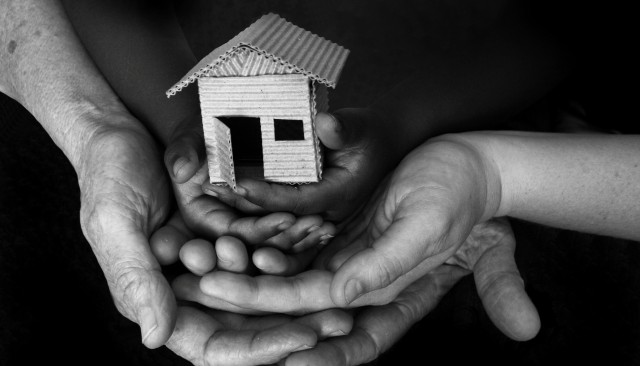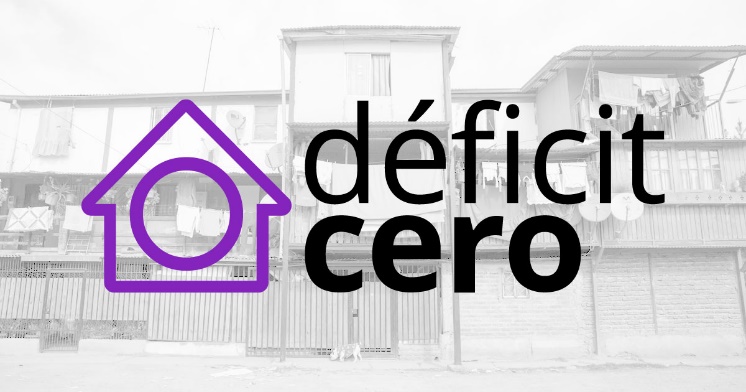
Avellon Williams
SANTIAGO, CHILE- In addition to affecting the quality of life, substandard housing denies those without a roof of their own the ability to live a decent life. Moreover, it deepens the problem of domestic violence, putting women’s lives in danger.

As far as housing is concerned, Chile is facing one of the worst crises in decades. Thousands of families have been forced to live crowded together, in homeless camps or relatives’ homes as a result of the pandemic’s economic effects, including a historic rise in mortgages and rent.
Recent studies by Deficit Cero and the Catholic University’s Center for Public Policy outlined this in specific terms. They released a report titled: “Housing Deficit: How many families need housing and in what sectors of the country?”
Their findings concluded that 641,421 housing units are needed throughout the country.
A problem in Chile, already serious, worsened as a result of this: domestic violence. In 2021, the police recorded 144,832 incidents of domestic violence, according to official statistics for socially-linked crimes. The number of women victims was 109,440, but only 25,552 arrests were made.

Unless further action is taken, the 2022 situation will remain essentially the same. Police data shows there were already 50,213 cases by May of this year. It is also worrying to know that 133 repeated complaints of DV have been registered against 10 perpetrators who are currently in custody.
Elizabeth Wagemann, director of the Laboratory for the City and the Territory, also a professor at the Diego Portales University, believes the housing crisis is a global issue. Several factors account for this phenomenon, she explained.

Due to the increase in urban populations, the demand for housing has increased in cities. This increased demand affects the purchase price for homes, and also places upward pressure on rent. Additionally, there is inflation and the rising cost of living.
“One in every ten families doesn’t have access to adequate housing (…) We know that living in reduced spaces and poor conditions affects people in a number of ways,” she explained.
Guila Sosman, a psychologist specializing in trauma at Diego Portales University, shares this view. According to her, the housing crisis is a potent risk factor.

“When we were all confined due to the pandemic lockdowns, the problems of domestic violence increased. Clearly, the dynamics of intra-family violence can become worse in these contexts because the aggressors have much greater control of the situation. They’re more alert and aware of the movements of the people they want to exercise power over,” she indicated.
Similar situations emerge when there’s no housing when conditions are poor, or when the family lives with relatives. Likewise, the aggressor is able to exert more control here, and the victim has less space to maneuver and fewer options to seek help.
A ROOF ALONE ISN’T ENOUGH

Sosman emphasizes that there needs to be a certain separation of space. Separated spaces can help prevent physical violence, whether it is sexual or gender-based.
“Those most at risk are girls, women, and elders, who are in permanent physical closeness within a family where there may be an aggressive person,” she notes.
Sosman believes that the Chilean Ministry of Women and Gender Equity has made some advances in some areas pertaining to victims. More professionals have been trained who can provide specific attention to this type of problem.
However, “a great deal is lacking, because there are situations – of emotional and economic dependence for example – that hinder the woman’s ability to end her living arrangement with those who are harming her.”

According to the UN Economic Commission for Latin America and the Caribbean, employment is another barrier. In Latin America, the pandemic reversed a decade of progress in women’s participation in the workforce.
During the period November 2021 to January 2022, Chile’s National Statistics Institute reported that women consistently participated in the labor market less than men: 48.3% of women were employed during that period, while 69.6% of men did. In other words, there is a 21.3 percentage point difference between the men and women in terms of their labour participation.
UDP professor said this situation “doesn’t help women to leave their shared living situation when their partner is violent.” As a mother, she said, the situation is even more complicated, as not only do they have to move out, but they also have to find housing for their children.
There are no easy solutions, neither for the victims nor for their families. Frequently, the victims cannot leave because they don’t want to leave their children with the aggressor. Even though there is a national center for children’s services with programs to handle such cases, the system is on the verge of collapse, she said.

Elizabeth Wagemann suggested a broad and intersectional approach to combat this complex problem, since it is not simply enough to build more houses and apartments. Several other interventions and tools are also needed to deal with the problem, including the rehabilitation of homes in disrepair, rent support, and controls on urban density, as well as transitional neighborhoods.
“Another thing that’s very important to include is a holistic focus on housing because it’s not only a matter of a housing unit but also what its context is within the neighborhood and the city. This means that access should also include infrastructure, features, services, green spaces, and other things,” specified the expert.
According to Wagemann, often when housing with a social focus is built in urban areas, other aspects of life are not available, such as access to schools; or the constructions are so far from basic services that the residents are forced to travel long distances due to a lack of transportation, for example.




